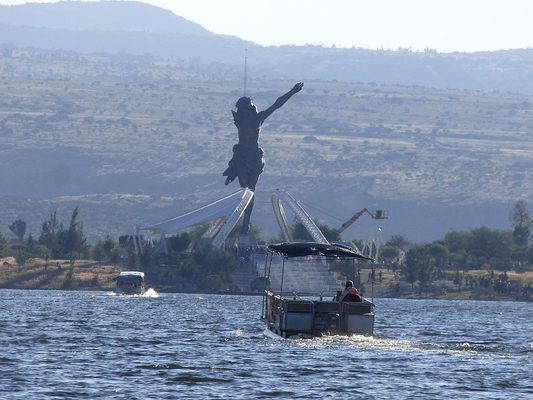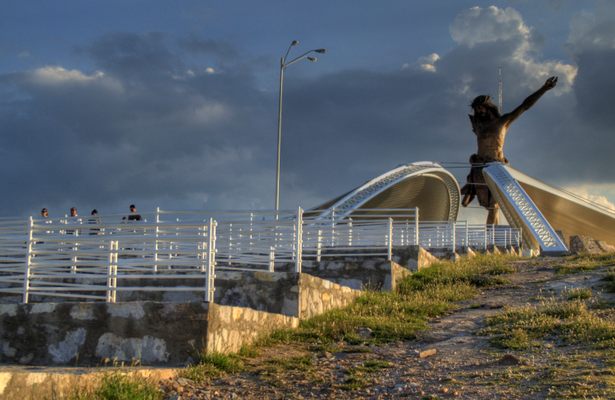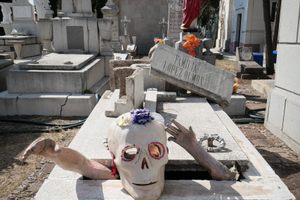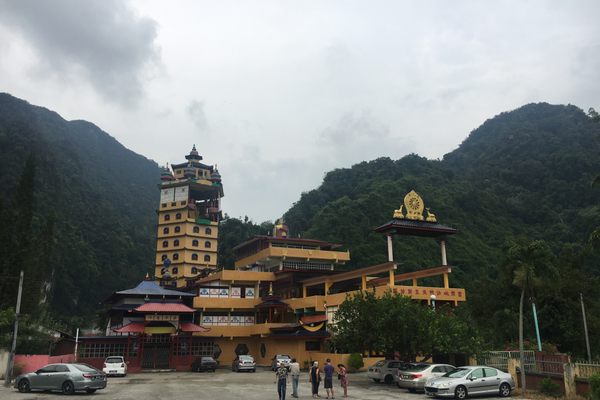About
This lake created by the Plutarco Elías Calles dam also transformed some of the highest landmasses in the region into islands. The best-known of these is likely the one sustaining the 82-foot (25-meters) tall concrete and steel sculpture known as "El Cristo Roto."
The massive crucifixion is the work of Miguel Romo. It has been the site of religious pilgrimages and devotions since its inauguration in 2006. The statue has been "broken," missing a leg and arm since its construction. It's designed to represent the troubled history surrounding the flooding of the region and the exodus of its population.
The region consisted of a small population established by the indigenous Chichimecas. The region was also the site of heavy fighting during the Cristero War. During the late 1920s construction of the dam most of the region was flooded. This forced many of the native inhabitants to move to the shores of the newly-formed lake, forming the town of San José de Gracia.
Local lore also speaks of a priest who found a broken crucifix and promised to have it fixed. The crucifix spoke to him and explained that its appearance would become a symbol for those who feel broken or lost. This story, as well as the exodus inspired Romo's work.
Nowadays, the statue continues to be considered the savior of lost causes, and is a popular stop for many Mexican citizens crossing into the United States. It has also been the sight of faith healings. For those not particularly interested in the religiousness of the site, the dam and island are known for their amazing vistas of the semi-arid landscape of Central Mexico.
Related Tags
Know Before You Go
Boats to the statue depart from the town of San José de Gracia.
Community Contributors
Added By
Published
February 10, 2020




























